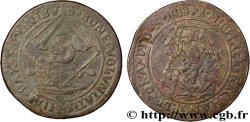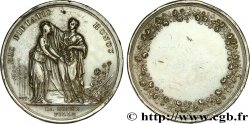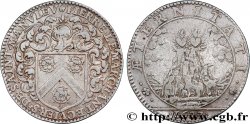E-auction 134-74949 - fjt_0328 - NORMANDY (GENTRY AND TOWNS OF...) Charles-François-Frédéric de Montmorency - Luxembourg, gouverneur de Normandie 1709
You must signin and be an approved bidder to bid, LOGIN TO BID. Accounts are subject to approval and the approval process takes place within 48 hours. Do not wait until the day a sale closes to register. Clicking on « bid » constitutes acceptance of the terms of use of cgb.fr private e-auctions.
Bids must be placed in whole Euro amounts only. The sale will start closing at the time stated on the item description; any bids received at the site after the closing time will not be executed. Transmission times may vary and bids could be rejected if you wait until the last second. For further information ckeck the E-auctions F.A.Q.
NO BUYER'S FEE.
NO BUYER'S FEE.
| Estimate : | 180 € |
| Price : | 46 € |
| Maximum bid : | 76 € |
| End of the sale : | 09 November 2015 18:32:00 |
| bidders : | 8 bidders |
Type : Charles-François-Frédéric de Montmorency - Luxembourg, gouverneur de Normandie
Date: 1709
Metal : silver
Diameter : 30,5 mm
Orientation dies : 6 h.
Edge : cannelée
Rarity : R1
Coments on the condition:
Extraordinaire patine bleue
Catalogue references :
F.6095 - 3271
Obverse
Obverse legend : CH. F. F. DUC DE LUXEMBOURG GOUVERNEUR DE NORMANDIE.
Obverse description : Armes de Charles- François- Frédéric de Montmorency - Luxembourg, gouverneur de Normandie.
Reverse
Reverse legend : PRESENTE. PAR. LE. CORPS. DE. VILLE. DE. ROVEN. 1709.
Reverse description : Écu rond aux armes de Rouen sur un cartouche dont le bas est cerné d'une guirlande.
Commentary
Charles François Frédéric de Montmorency-Luxembourg (1662-1726) est prince d'Aigremont et de Tingry, Duc de Beaufort puis Duc de Piney (Luxembourg). Il est aussi pair de France, marquis de Bellenave, comte de Bouteville, de Dangu et de Lassé, baron de Mello. Il est le fils de François-Henri de Montmorency-Luxembourg (1628-1695), maréchal de France, frère de Christian-Louis, maréchal de France et père de Charles Christian Frédéric, maréchal de France qui accueillit Jean-Jacques Rousseau. Les armes de Montmorency-Luxembourg portent d’or, à la croix de gueules, cantonnée de seize alérions d'azur posés quatre, quatre, quatre et quatre (souvenir de seize bannières ennemies prises au combat) et chargées en cœur d'un écusson de Luxembourg-Piney.
Les gouvernements, divisions militaires et politiques du royaume, étaient au nombre de douze au XVIe siècle, ils sont trente-neuf en 1776, dont dix-huit de première classe (Picardie, Flandre, Normandie, Lorraine, Bourgogne, etc..) et vingt-et-un de seconde classe (Boulonnais, Artois, Berry, Auvergne, etc..). Les gouverneurs, importants personnages lors des Guerres de religion et parfois rivaux dangereux du pouvoir voient leurs pouvoirs amoindris par la royauté, notamment par Henri IV ou par Richelieu. Louis XIV réduisit leur exercice à trois ans et ne leur laissa que des honneurs, tandis que les intendants exerçaient la réalité du pouvoir sur le terrain. Les gouvernements continuèrent néanmoins de se transmettre dans les grandes familles : Condé en Bourgogne, Luxembourg en Normandie, etc... .
Les gouvernements, divisions militaires et politiques du royaume, étaient au nombre de douze au XVIe siècle, ils sont trente-neuf en 1776, dont dix-huit de première classe (Picardie, Flandre, Normandie, Lorraine, Bourgogne, etc..) et vingt-et-un de seconde classe (Boulonnais, Artois, Berry, Auvergne, etc..). Les gouverneurs, importants personnages lors des Guerres de religion et parfois rivaux dangereux du pouvoir voient leurs pouvoirs amoindris par la royauté, notamment par Henri IV ou par Richelieu. Louis XIV réduisit leur exercice à trois ans et ne leur laissa que des honneurs, tandis que les intendants exerçaient la réalité du pouvoir sur le terrain. Les gouvernements continuèrent néanmoins de se transmettre dans les grandes familles : Condé en Bourgogne, Luxembourg en Normandie, etc... .








 Report a mistake
Report a mistake Print the page
Print the page Share my selection
Share my selection Ask a question
Ask a question Consign / sell
Consign / sell
 Full data
Full data



